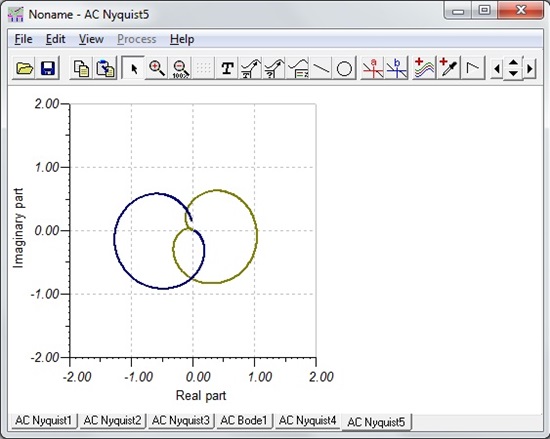I am simulating my communications receiver, a bandpass filter implemented using a cascade of 2 Multiple Feedback stages - a high pass filter followed by a low pass filter. So the circuit has 2 op-amps.
I am trying to analyze the stability of my overall filter by plotting the Nyquist diagram in TINA. I notice that it nicely plots the Nyquist plots of the various Outputs designated in my schematic i.e. the output of the first stage, and the output of the second stage.
I am not sure how to interpret the results (picture pasted below). The blue curve is the Nyquist plot after the first stage, and the other is the plot after the 2nd stage. Since the first stage (blue curve) encircles (-1,0), does it mean the 1st stage is potentially unstable? Can I infer instability or stability directly from the plots?
I am also curious how TINA computes the Nyquist plot in general, and in this case, where there is feedback in stage 1 as well as stage 2.
Many thanks for any help!
Sira


